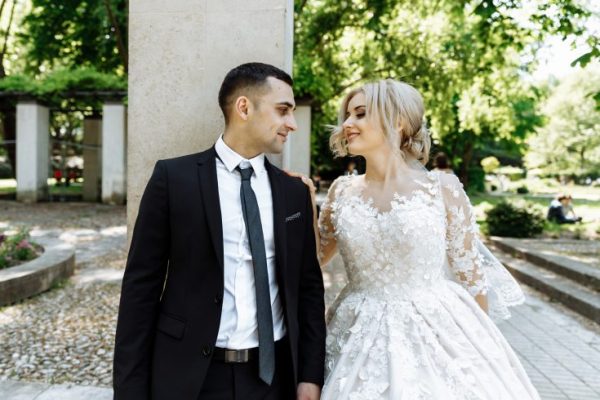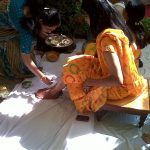Germany is a central European country with a long and interesting history. Every country has its special traditions and unique superstitions and of course, German weddings are no different. In this article, common German wedding traditions and their importance are explained.
German Wedding Rituals
German weddings are just like any other wedding; they are an expression of love, heritage, and history. Most of the German wedding traditions are common in the country but there are some regional differences. Regardless, German wedding customs are lovely and enjoyable.
Hochzeitslader: This is the German practice of hiring the services of a personal inviter. The Hochzeitslader goes to the homes of the guests and delivers a personal rhyming invitation. To accept the invitation to the traditional German wedding, a guest will take a ribbon from the Hochzeitslader’s costume and pin it to the hat. Then the guest will invite him into their home for a celebratory drink.
Polterabend: This is the most memorable and fun German pre-wedding custom which happens the day before the wedding. Family and friends bring porcelain and china dishes, but not glassware, to break them at the bride’s house. This is done so evil spirits are warded off. After all the breaking has been done, the bride and groom clean up the mess together; this symbolises how the couple will have to work together and cooperate with each other during their marriage. In North Germany, the night finishes with the burning of the groom’s trousers or the bride’s bra at midnight representing the end of bachelorhood. Then the ashes are buried next to a bottle of schnaps, which will be taken out a year later for a communal round of drinking.

Junggesellenabschied: This is the bachelor and bachelorette parties. Friends will take the couple out separately to the city centre or go to a party city to misbehave. Sometimes, the groups will dress up in matching outfits, and the bride or groom will wear a funnier outfit. The main point of the night is to get drunk and for the bride or groom to perform funny, ridiculous, and challenging tasks throughout this fun filled night.
Baumstamm Sägen: This is the most common of the German wedding customs. After the wedding ceremony, the bride and groom have to saw a large log. The log is the first obstacle that the married couple must overcome. This is a representation of the couple working together while being married.
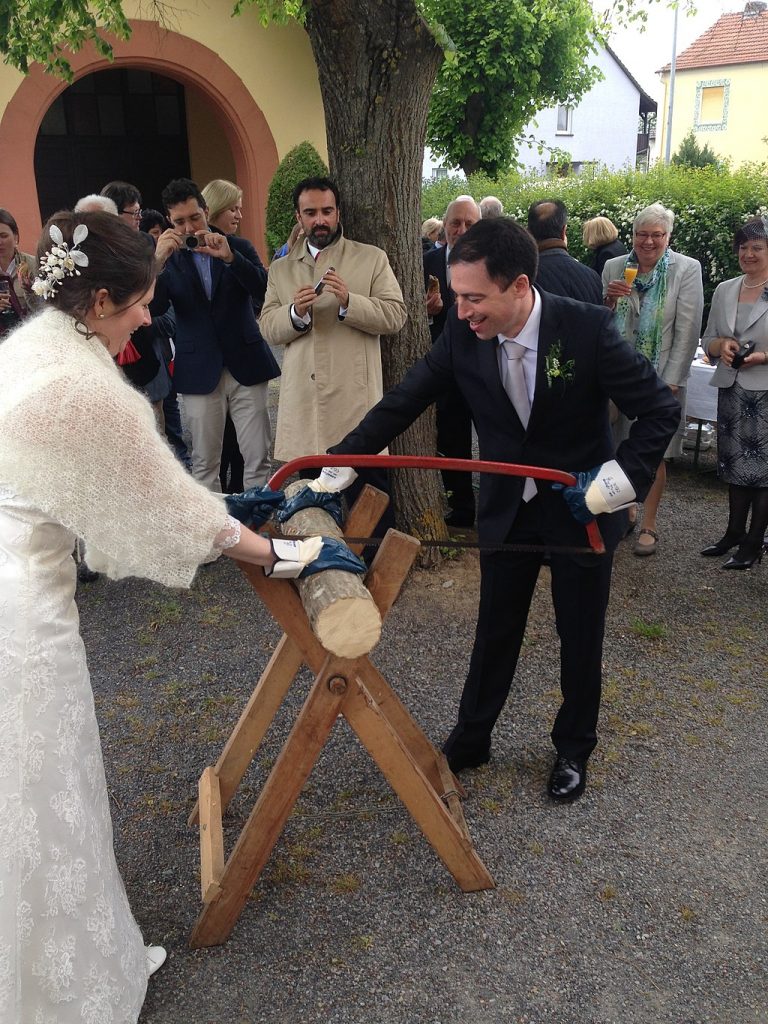
Honking Cars: After the German wedding ceremony, the wedding guests receive a white ribbon to put on their cars to identify them as being part of the wedding group and that a couple has married. Usually, the other drivers will honk back wishing the new married couple good luck with their marriage.
Spitzwecken: This is a three metre long cake which is brought into the wedding reception room on a long wooden board by a group of guests. The group, carrying the cake, pretends that they can’t enter because of the cake. Then the guests decide to saw the cake and the wooden board in half so that it fits through the door. Everyone cheers at this solution and helps themselves to a piece of cake.
Hochzeitstanz: This is the first dance for the couple to open the dancefloor after the German traditional wedding ceremony. Most German couples will do the waltz.
Schleiertanz: This is known as the veil dance. The bride and groom dance under the wedding veil held up by guests. After the dance is finished, the unmarried guests try to tear a piece of the veil because whoever gets the biggest piece is said to be married next.
Hochzeitsstreiche: Another one of the German wedding traditions is wedding pranks. Friends of the bride and groom will play a series of pranks on the couple. The point of this ritual is to make the couple’s first night of marriage as funny, memorable, and annoying as possible.
Brautentführung: Bridal kidnapping is one of those bizarre wedding rituals in Germany. During the wedding reception, the groom’s friends “kidnap” the bride and the groom must do anything to get her back. Once the groom has located the bride, he has to pay the ransom like the “kidnapper’s” bar bill or perform a funny task.
Wedding Rings: The engagement ring goes on the fourth finger on the person’s left hand. The wedding ring goes on the fourth finger of the right hand in accordance with German wedding ceremony rituals. After the couple is wed, the engagement ring is switched to the right hand where the wedding band is placed. Sometimes couples forgo an engagement ring.
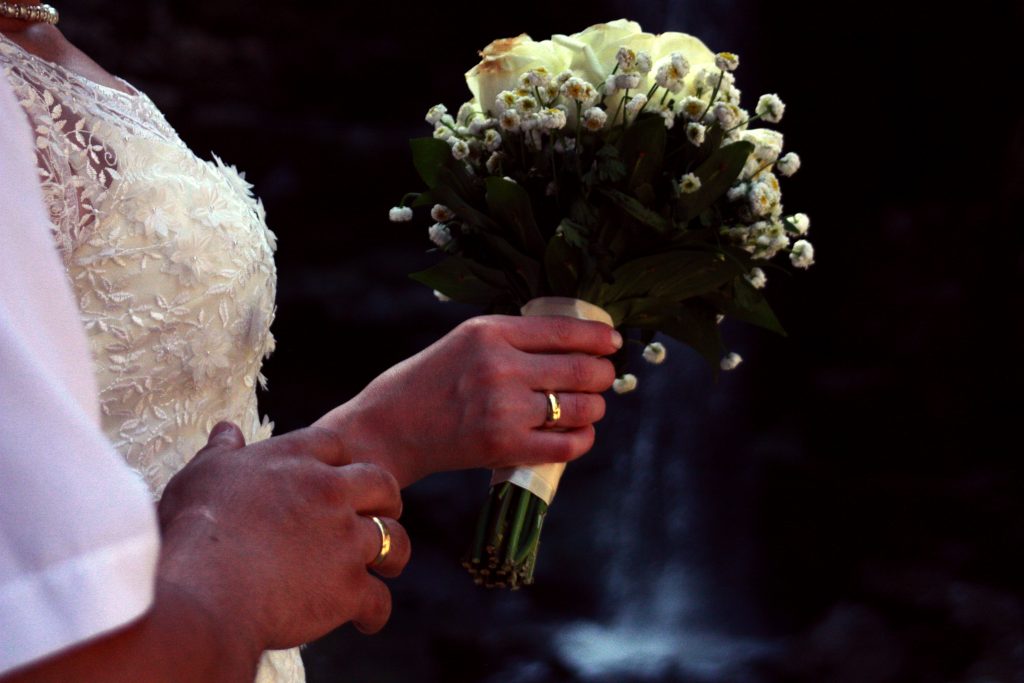
German Wedding Attire
Bride: A German bride will wear a white wedding dress, but without a long train. Brides usually wear a ballgown-style wedding dress with a fingertip length veil. If the wedding is in a church, then a floor-length, cathedral-style veil will be chosen.
Brautschuh: Brides shoes is the translation. The bride wears these shoes for the wedding and reception. According to traditions, either the bride pays for her bridal shoes with cent coins to show that she is a prudent spender or uses her savings to buy the shoes. She also hides a cent coin in her shoes for prosperity in her marriage.
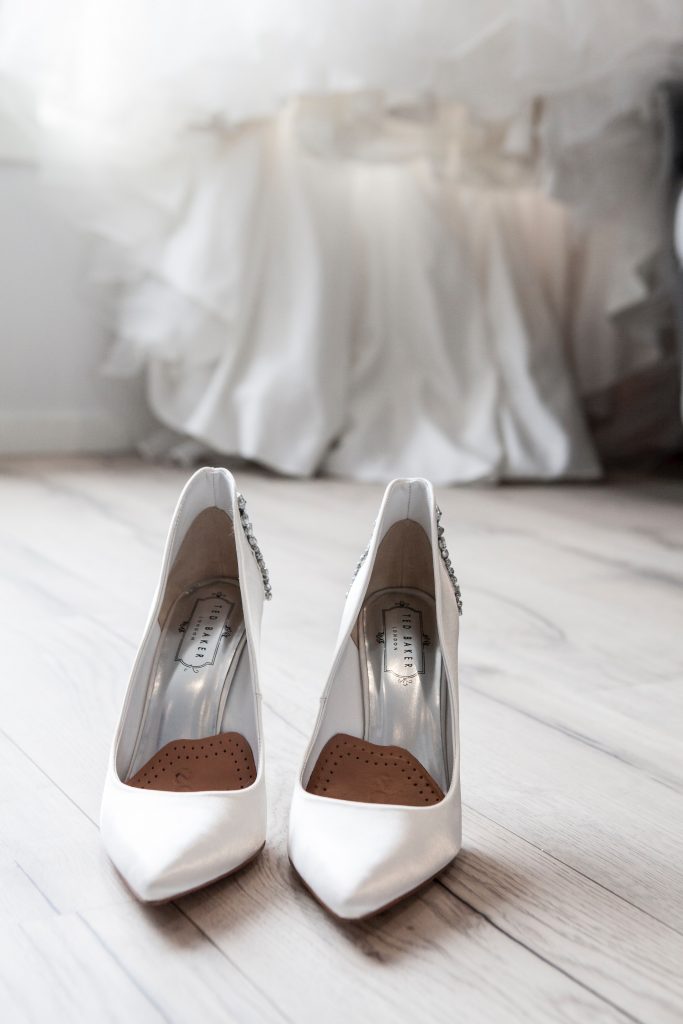
Brautstrauß: This is the bridal bouquet given to the bride from the groom. The floral bouquet also contains ribbons which guests are given to put on their cars. After the ceremony, the bouquet is tossed by the bride so that the person who catches it is said to be married next. Some couples include cornflowers (Germany’s national flower) in their floral arrangements because these blue-violet coloured flowers look stunning.
Groom: A traditional German groom’s attire is simple; usually a black suit and a white shirt are the standard attire. A groom could also wear a classic tuxedo or well-tailored dress suit and there are a lot of choices regarding the cut, personalisation, and accessories for the groom’s outfit.
German Wedding Traditions and Customs
If you are ever invited to a German wedding, you are in for a treat as this article shows. The quirky wedding traditions range from sawing a log to breaking plates during an authentically German wedding. The important is that the couple celebrates their heritage and love.




